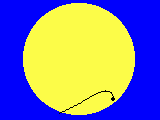 Essen, horizontal view
Essen, horizontal view
Internet Project
Observing, Photographing and Evaluating the
Transit of Venus, June 8th, 2004
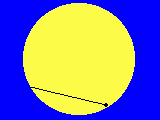 Essen, equatorial view
Essen, equatorial view
 Essen, horizontal view
Essen, horizontal view
|
Internet ProjectObserving, Photographing and Evaluating theTransit of Venus, June 8th, 2004 |
 Essen, equatorial view
Essen, equatorial view
|

By evaluating pictures taken during the transit of Venus (or Mercury, respectively) you get all results relative to the sun's angular radius ρS . For instance, by comparison of simultaneously taken pictures of different observers you get the relative parallax effect f. To be able to derive its absolute value Δβ you must know the angular radius of the Sun:
Of course, you know ρS roughly (about 15 arcminutes) and you can find its exact value - even for the day of interest. But:
There are, at least, two simple possibilities for this measurement:
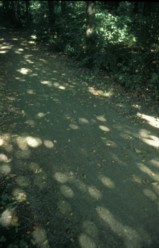
| 
| |
|---|---|---|
| Sunspots on the ground | Light rays causing the spots on the ground |
The spots are pinhole camara pictures of the sun! Therefore, the angular radius ρS of the Sun can be determined by measuring the linear radius r of a spot and its distance d to the hole of its origin:
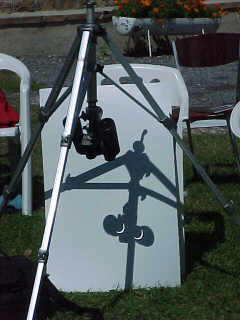
| 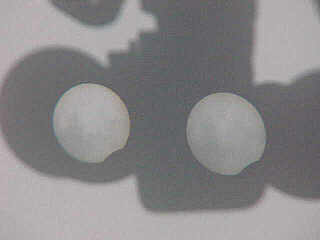
| 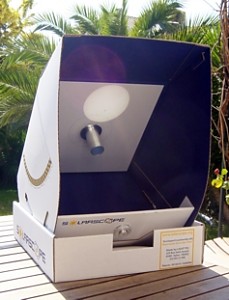
| 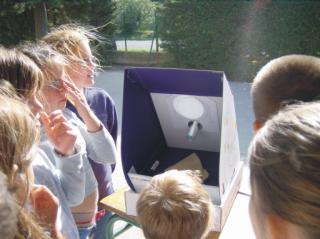
| ||
|---|---|---|---|---|---|
| Mounting of a binocular for observing and measuring the sun's movement | The both projection of the Sun (during an eclipse) | Projection with ... | ... Solarscope |
Having the optical system fixed you will soon remark that the Sun's picture tends to wander over the sheet.
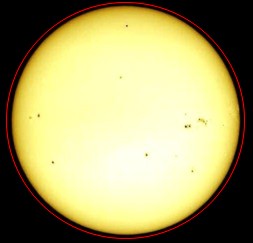
| 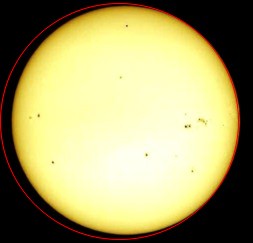
| 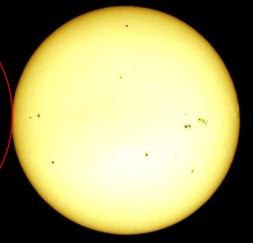
| |||
|---|---|---|---|---|---|
| Start | "Third contact": t1 | "Fourth contact": t2 |

Therefore, the angular radius of the Sun must be:

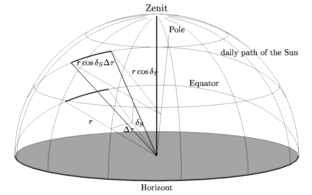
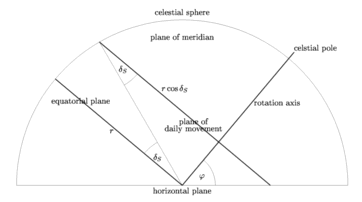
The situation of the above picture, but now projected to the plane of
meridian.


 Prof. Dr. Udo Backhaus
Prof. Dr. Udo Backhaus